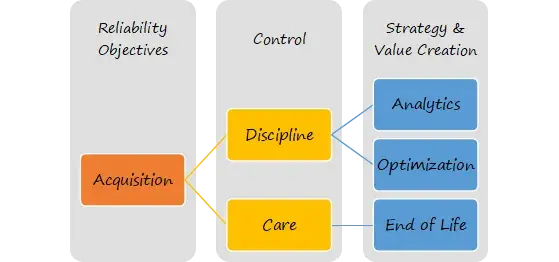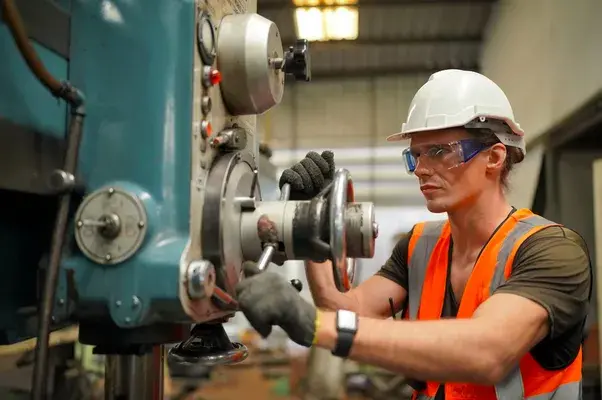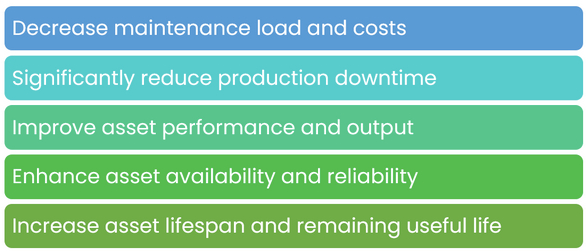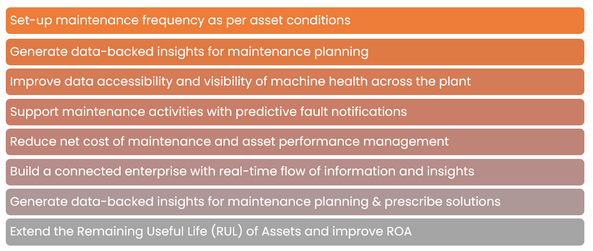Understanding Machine Health Score and its Importance in Asset Reliability

Machine health is the underlying propeller for asset reliability in the manufacturing industry. Machines that are maintained in optimal conditions are increasingly available for mission-critical operations. They are also at a lower risk of defective performance or sudden failure. This helps operations and maintenance teams move towards total plant reliability and depend on assets for uninterrupted production.
For decades, this understanding has pushed the preventive maintenance approach in manufacturing setups. Maintenance leaders are keen on monitoring individual machines and performing maintenance activities at predefined intervals. But this expensive approach forces them to carry spare inventory at all times and carry out replacements even before the remaining useful life of the component has been realized. Furthermore, the root cause analysis of declining machine conditions is rarely ever performed and similar problems keep happening repeatedly.
As manufacturing leaders are prioritizing maximum production uptime and plant reliability, they are attempting to figure out a holistic metric that can report overall plant condition. From a cost and ROI standpoint, machine health score is emerging as the metric that can generate real-time business intelligence and guide strategic decision-making. This article will cover what machine health score is and how it’s imperative for managing asset reliability.
What is machine health based on?
Before delving into machine health score as a metric, it’s important to understand what exactly machine health is made up of. Machine health is based on three main factors:
Maintenance requirements: For any equipment, basic maintenance standards and instructions are defined by the original equipment manufacturer (OEM). Furthermore, industry regulators can define equipment maintenance mandates to ensure a safe production environment for shop-floor workers. Machine health takes into consideration these standards and regulations to determine a frame of reference. If a machine is performing as per the pre-defined frame of reference, its maintenance needs can be predicted and planned. Any deviation from the standards can, however, give rise to unique maintenance requirements and indicate diminishing machine health.
Operating conditions: The operating condition of a machine is another important factor in determining its overall health. With cloud-enabled condition monitoring and predictive maintenance solutions, equipment conditions can be tracked in real-time. Advanced data analytics is deployed to capture machine vibrations and report them in the form of detailed frequency spectrum and waterfall diagrams. These in turn can be used to check anomalous behavior and deteriorating machine conditions, even before a physical inspection is due to be performed.
Running history: Finally, the running history of a machine tells a lot about its health. The number of times a machine has broken down since installation, the duration of every breakdown, and underlying cause of machine failure, and the impact on total production throughput are covered in running history. Historic machine performance and availability data need to be recorded and analyzed to determine the useful life of a machine. The useful life can, in turn, help determine the health in which the machine may be operating.
All these factors, when measured collectively, can generate machine health insights. Quantifying these insights results in the generation of machine health scores, which can be used by maintenance and operations teams to plan maintenance events.
Understanding Machine Health Score
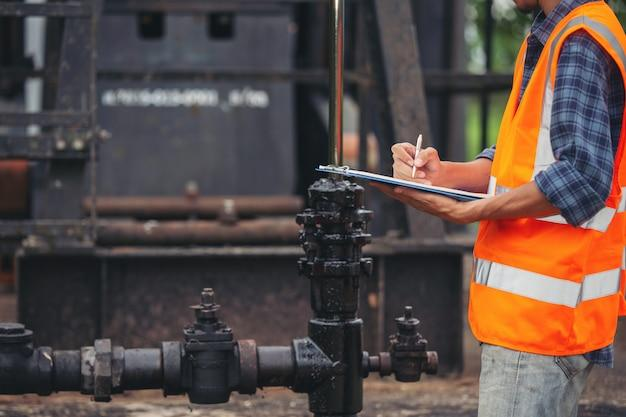
Machine health score is essentially a scoring system used to monitor the overall equipment effectiveness by way of performing regular condition checks. It is reported in the form of an absolute percentage or a percentage range to indicate the machine’s condition or reliability. To arrive at a quantifiable number or score, a series of health checks are performed on the machine. If the machine under investigation is checked 10 times and passes the checks 7 times, then a health score of 70% can be assigned to it.
These checks are sophisticated in nature and capture the machine’s condition, running history, and maintenance requirements. If the pass or fail status of the health check is indeterminate over a large number of checks, then deeper machine investigation is needed. During standard checks, however, the following score ranges can be generated:
| Machine Health Score | Meaning of score |
|---|---|
| N/A | Either insufficient data exists to determine machine health or the health check isn’t performed to make the machine health score available |
| 0% – 20% | Machine is operating at a very high risk of breakdown due to frequently sustained wear-tear and/or high consumption of energy |
| 21% – 40% | Machine has a high risk of failure due to heavy wear-tear and high energy consumption |
| 41% – 60% | Machine is going through repeated wear, that is diminishing its health and putting it at risk of sudden breakdown |
| 61% – 80% | Machine is experiencing intermittent wear and sub-optimal energy consumption, causing a small risk of potential failure |
| 81% – 100% | Machine is working in near-optimal condition and is highly reliable. There is a low or no chance of failure due to wear-tear. |
Various digital reliability mechanisms can report machine health scores with an error margin of 10-20%. Solutions that deploy predictive maintenance technologies such as edge diagnostics and digital twins are more accurate than others. Regular reporting of machine health scores can empower maintenance teams with invaluable intelligence and allow them to organize informed maintenance events.
In conclusion, the machine health score becomes a much more useful indicator of plant reliability than total production downtime. For both discrete and continuous production environments, maintenance teams can realistically track the availability and reliability of all available assets. Whether machines are grouped together or distributed over vast geographies, a unified dashboard can inform maintenance decision-makers about machine conditions. With a holistic understanding of what machine health is and how it is scored, maintenance professionals can select digital reliability solutions that can help in the accurate calculation and reporting of machine health.
Infinite Uptime’s digital reliability solutions perform advanced monitoring and analysis to report the most accurate machine health score for digitized plants. Plant leaders in industries such as Cement, Steel, Mining, Automotive, Tyre, Chemicals, Paper, FMCG, Pharmaceuticals, Glass, Oil & Gas, etc. have witnessed a sustainable increase in asset availability and performance with our digital reliability platform. Our patented vibration analysis technology and syndicated reliability reports allow maintenance leaders to minimize production downtime and improve machine health in the long term.
Get in touch with our experts or book a demo now to understand how our solutions fit your plant.




